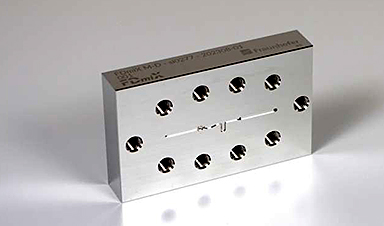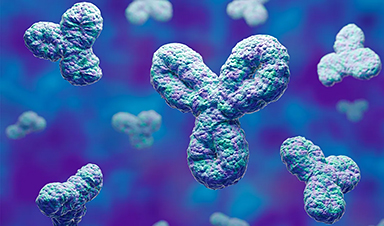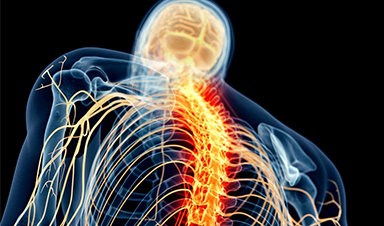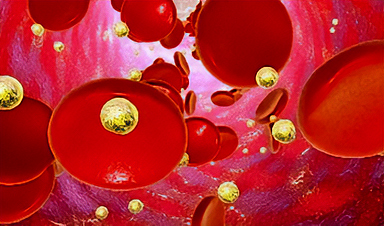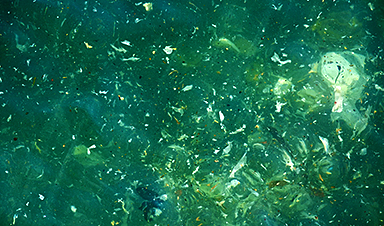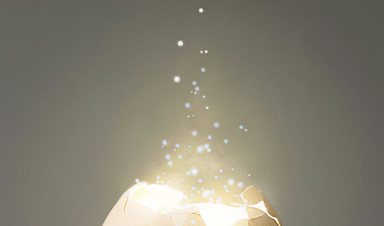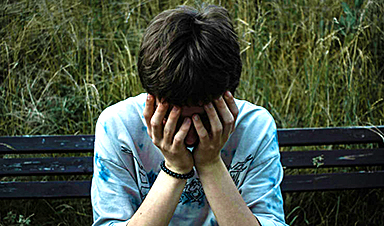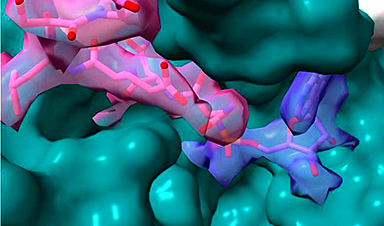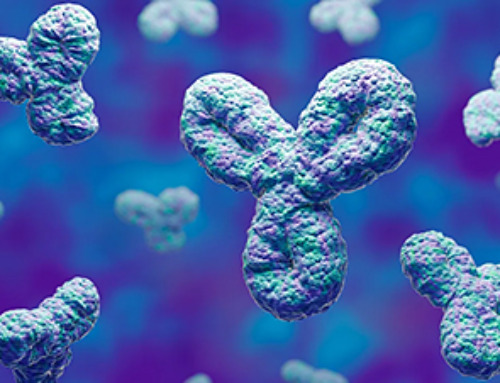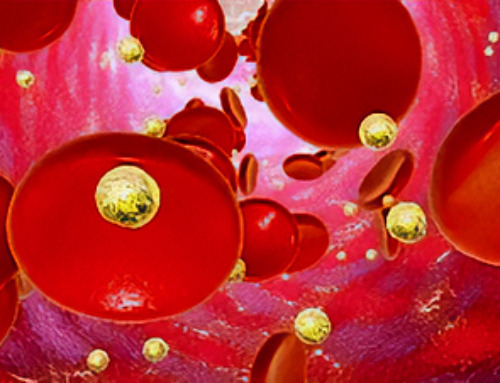Nucleic acid-based medications such as mRNA vaccines offer tremendous potential for medicine and are opening up new therapeutic approaches. These active ingredients must be enclosed inside nanoparticles to ensure that they get to where they are needed inside the body’s cells.
The Fraunhofer Institute for Production Systems and Design Technology IPK and FDX Fluid Dynamix GmbH have worked together to develop a technology platform for the production of nanoparticles that can achieve particle quality and stability at levels previously out of reach: FDmiX, short for Fraunhofer Dynamic Mixing Technologies. Swiss chemical and pharmaceutical company Lonza has now licensed the technology for its own good manufacturing practice (GMP) production activities.
RNA and DNA, both nucleic acids, are not only found in cells; they can also be components of medications. One common example widely known from the coronavirus pandemic is mRNA vaccines.
Medical professionals the world over are very hopeful about nucleic acid-based active ingredients, which offer potential as therapies for diseases that were previously difficult to treat, including some forms of cancer. However, safely and effectively transporting these sensitive nucleic acids to the cells, where the messages they carry can be translated into proteins, has proven to be a significant challenge thus far.
A protective envelope is needed to get the sensitive active ingredient into the cells. These nanoparticles are produced using fluid mixing processes. Very thorough, rapid mixing is necessary to produce particles of the requisite quality. Impinging jet mixers (also known as T-mixers or Y-mixers) are available for industrial-scale applications. They enable high throughput, but at the expense of mixing quality.
Better, faster mixing
In the Fraunhofer Dynamic Mixing Technologies (FDmiX) platform, Fraunhofer IPK and FDX Fluid Dynamix GmbH have managed to bridge the gap between mixing quality and throughput. The FDmiX platform allows for consistently high mixing quality at any scale, from the lab right up to mass production. It has already successfully passed tests aimed at production of lipid and polymer nanoparticles and of nanoemulsions.
As extensive testing has shown, the mixing quality of the FDmiX technology platform is superior to the systems that have been available to date, enabling production of particles at previously unattainable levels of quality.
The system is also impressive in terms of its scaling capability, as encapsulation can take place with volume streams ranging from 5 ml/min to 1.5 l/min without affecting the particle properties.
Lonza, a global development and production partner to the pharmaceutical, biotech, and neutraceuticals markets, has licensed the patented FDmiX technology and is already using it.
“Human cells defend themselves against foreign genetic material. That’s why the mRNA active ingredients have to be enclosed inside nanoparticles. So the particles act as a protective envelope, encapsulating the substance until it has entered the cell inside the body,” says Christoph Hein, head of the Ultra- and High-precision Technology division at Fraunhofer IPK in Berlin.
To be able to produce the nanoparticles, the active ingredient dissolved in a buffer has to be mixed with another solution, such as a lipid solution. Once the two liquids have been combined, lipid nanoparticles are formed which in turn form a lipid envelope around the active ingredient.
“With the FDmiX platform, we can produce significantly smaller and more homogeneous particles and even adjust their size. FDmiX lets us produce mixtures of a previously unattainable level of homogeneity with very short mixing times. That’s relevant because the mixing quality not only determines the quality of the nanoparticles, but ultimately also how effective they are.”
Clever nozzle design leads to homogeneously mixed nanoparticles
But how can a high and consistent mixing quality be combined with throughput? The centerpiece of the FDmiX platform is an OsciJet nozzle from FDX Fluid Dynamix GmbH.
Inside the nozzle, a jet of liquid is positioned on one of the sides of the main chamber. Before leaving the nozzle, a small part of the jet is deflected into a side channel. At the end of the side channel, it meets the main jet again and pushes it to the other side. This causes the main jet to oscillate continuously from one side to the other at a high frequency.
In this way, the jet of lipid solution oscillating through the nozzle meets the stream of the mRNA active ingredient at a perpendicular angle, creating a homogeneous mixture with nanoparticles of uniform size.
In tests of conventional impinging mixers (also known as T-mixers or Y-mixers), by contrast, the lipid solution and mRNA active ingredient collide before flowing together through the same channel. This creates a dynamic vortex, resulting in inhomogeneous particles of lower quality.
“In encapsulation tests on mRNA in lipid nanoparticles using different mixers and flow rates, FDmiX generated smaller particles with significantly lower size distribution compared to a T-mixer at the same flow rate,” Hein explains.
In tests, the project partners produced nanoparticles about 10% to 20% smaller than those produced using a T-mixer. They also had significantly smaller size distribution and high encapsulation efficiency and particle integrity.
Large quantities of nanoparticles are needed during the clinical phase and the subsequent production stage. Here as well, the technology from Fraunhofer IPK and FDX Fluid Dynamix GmbH is impressive: The two project partners developed and tested mixers for various pressure and flow rates. The smallest mixers (FDmiX XS) can work at flow rates under 5 milliliters per minute, while the largest (FDmiX XL) can work at more than 1.5 liters per minute.
Broad range of applications for FDmiX nanoparticles
The nanoparticles produced in this way can be used for a wide range of applications, well beyond encapsulation of mRNA and stabilization of vaccines.
For example, this technology can also be used in cardiology for cardiac catheter coatings. When a balloon catheter is expanded during an examination, nanoparticles are absorbed into the arterial wall, preventing new deposits from forming there. This can help to prevent stenosis, or narrowing of the blood vessels.
Nanoparticles are also used in tumor therapy, and the molecules may also be helpful in treating neurodegenerative diseases such as Alzheimer’s and other forms of dementia.
Provided by Fraunhofer-Gesellschaft
News
Specially engineered antibody delivers RNA therapy to treatment-resistant tumors
Elias Quijano, PhD; Diana Martinez-Saucedo, PhD; Zaira Ianniello, PhD; and Natasha Pinto-Medici, PhD, there are 25 other contributors, most from Yale's Department of Therapeutic Radiology and from the departments of genetics, molecular biophysics and [...]
Vaccinated women face fewer cervical cancer risks
New data from Denmark shows the HPV vaccine’s powerful long-term impact, while also revealing why cervical cancer screening is still essential. A Danish study published in the journal Eurosurveillance reports that women who received the human [...]
3D-printed implant offers a potential new route to repair spinal cord injuries
A research team at RCSI University of Medicine and Health Sciences has developed a 3-D printed implant to deliver electrical stimulation to injured areas of the spinal cord, offering a potential new route to [...]
Nanocrystals Carrying Radioisotopes Offer New Hope for Cancer Treatment
The Science Scientists have developed tiny nanocrystal particles made up of isotopes of the elements lanthanum, vanadium, and oxygen for use in treating cancer. These crystals are smaller than many microbes and can carry isotopes of [...]
New Once-a-Week Shot Promises Life-Changing Relief for Parkinson’s Patients
A once-a-week shot from Australian scientists could spare people with Parkinson’s the grind of taking pills several times a day. The tiny, biodegradable gel sits under the skin and releases steady doses of two [...]
Weekly injectable drug offers hope for Parkinson’s patients
A new weekly injectable drug could transform the lives of more than eight million people living with Parkinson's disease, potentially replacing the need for multiple daily tablets. Scientists from the University of South Australia [...]
Most Plastic in the Ocean Is Invisible—And Deadly
Nanoplastics—particles smaller than a human hair—can pass through cell walls and enter the food web. New research suggest 27 million metric tons of nanoplastics are spread across just the top layer of the North [...]
Repurposed drugs could calm the immune system’s response to nanomedicine
An international study led by researchers at the University of Colorado Anschutz Medical Campus has identified a promising strategy to enhance the safety of nanomedicines, advanced therapies often used in cancer and vaccine treatments, [...]
Nano-Enhanced Hydrogel Strategies for Cartilage Repair
A recent article in Engineering describes the development of a protein-based nanocomposite hydrogel designed to deliver two therapeutic agents—dexamethasone (Dex) and kartogenin (KGN)—to support cartilage repair. The hydrogel is engineered to modulate immune responses and promote [...]
New Cancer Drug Blocks Tumors Without Debilitating Side Effects
A new drug targets RAS-PI3Kα pathways without harmful side effects. It was developed using high-performance computing and AI. A new cancer drug candidate, developed through a collaboration between Lawrence Livermore National Laboratory (LLNL), BridgeBio Oncology [...]
Scientists Are Pretty Close to Replicating the First Thing That Ever Lived
For 400 million years, a leading hypothesis claims, Earth was an “RNA World,” meaning that life must’ve first replicated from RNA before the arrival of proteins and DNA. Unfortunately, scientists have failed to find [...]
Why ‘Peniaphobia’ Is Exploding Among Young People (And Why We Should Be Concerned)
An insidious illness is taking hold among a growing proportion of young people. Little known to the general public, peniaphobia—the fear of becoming poor—is gaining ground among teens and young adults. Discover the causes [...]
Team finds flawed data in recent study relevant to coronavirus antiviral development
The COVID pandemic illustrated how urgently we need antiviral medications capable of treating coronavirus infections. To aid this effort, researchers quickly homed in on part of SARS-CoV-2's molecular structure known as the NiRAN domain—an [...]
Drug-Coated Neural Implants Reduce Immune Rejection
Summary: A new study shows that coating neural prosthetic implants with the anti-inflammatory drug dexamethasone helps reduce the body’s immune response and scar tissue formation. This strategy enhances the long-term performance and stability of electrodes [...]
Scientists discover cancer-fighting bacteria that ‘soak up’ forever chemicals in the body
A family of healthy bacteria may help 'soak up' toxic forever chemicals in the body, warding off their cancerous effects. Forever chemicals, also known as PFAS (per- and polyfluoroalkyl substances), are toxic chemicals that [...]
Johns Hopkins Researchers Uncover a New Way To Kill Cancer Cells
A new study reveals that blocking ribosomal RNA production rewires cancer cell behavior and could help treat genetically unstable tumors. Researchers at the Johns Hopkins Kimmel Cancer Center and the Department of Radiation Oncology and Molecular [...]
